Why Crickets?
Crickets. The closest thing to a perfect protein source this planet has ever seen.
Presented by:

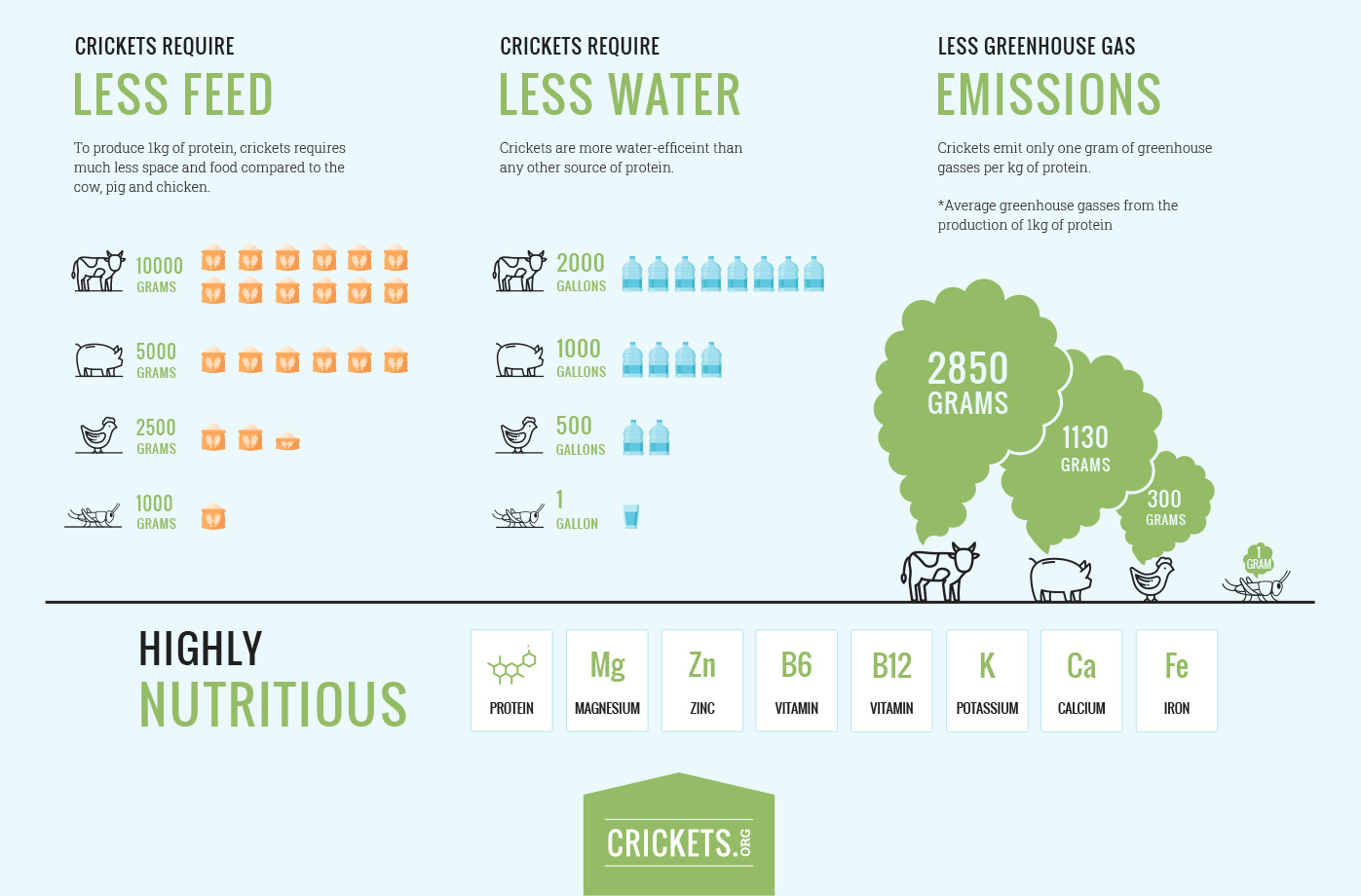
This article would be titled “Why Lobsters?” if it was written 120 years ago when lobsters were looked at with the same derision as crickets are today. Crustaceans like crabs and lobsters are basically giant ocean insects no matter how you look at it. Why is it that we’re so okay with eating a giant ocean insect but not a smaller land insect? It’s because you’re used to it. The only barrier separating a lobster and a cricket is the barrier in your head.
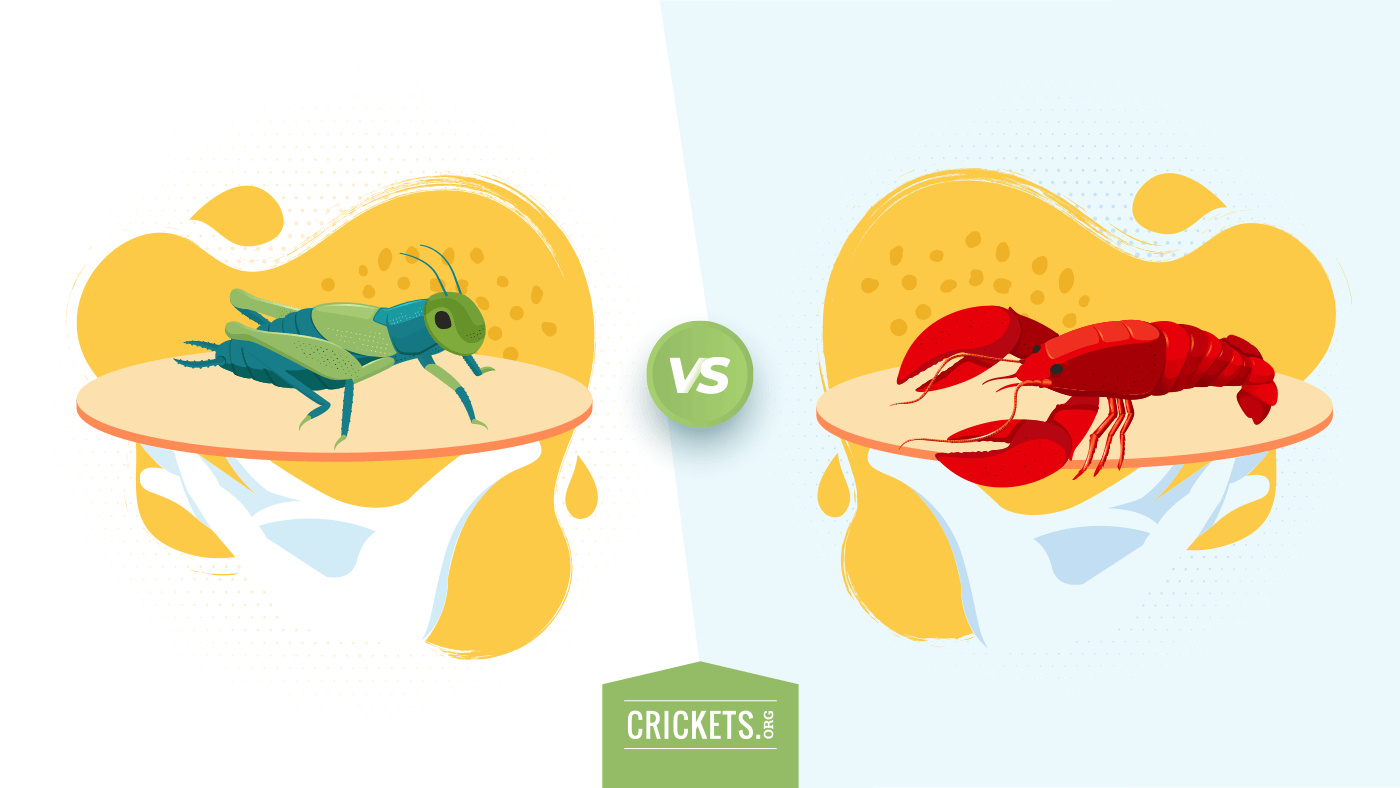
We often think of “meat” as just chicken, pork, beef, or seafood. We’ve held this belief ever since we ran out of buffalo. Maybe it’s time to reexamine where we get our protein sources and how we think about them. It’s weird that in our cute animal loving society, we’ll happily eat a cute cow but become disgusted at the thought of eating an insect like a cricket. Shouldn’t it be the other way around?
Leaving out an entire edible phylum of the animal kingdom from our plate causes us to miss out on health benefits and create an enormous devastating environmental impact that could be avoided. Now, let’s take a deep dive into why you should add crickets to your diet.
Eating crickets is eco-friendly.
Unfortunately, very few people know that our livestock industry is incredibly harmful to our planet.[1]
The Food and Agriculture Organization estimates that the livestock industry contributes to 18% of the world’s greenhouse gas emissions per year. It is the second-largest polluter after the electricity industry. The transportation industry pollutes the environment less than animal agriculture. These emissions contribute heavily to climate change.
Farms for rearing livestock occupy ⅓ of the world’s land and the consumption of animal products is steadily increasing. Farmers are clearing forests to convert the land into pasture, displacing local wildlife and harming plant life. Deforestation is a leading cause of animal extinction today.
The U.S. Department of Agriculture has discovered that animal parts and waste produced by the livestock industry majorly contribute to water pollution. This is especially prevalent in developing countries.
Livestock farming causes ridiculous amounts of waste. Animal agriculture consumes 55% of the water resources that we have available. Private residences only consume 5% on average. One farm with approximately 2,500 milking cows wastes as much water as a city with 411,000 residents.
It's bleak, but we need to face the facts, the world is running out of resources. Current livestock consumption is unsustainable. We have to start introducing other types of high-protein livestock that require less resources and Crickets fit the bill perfectly.
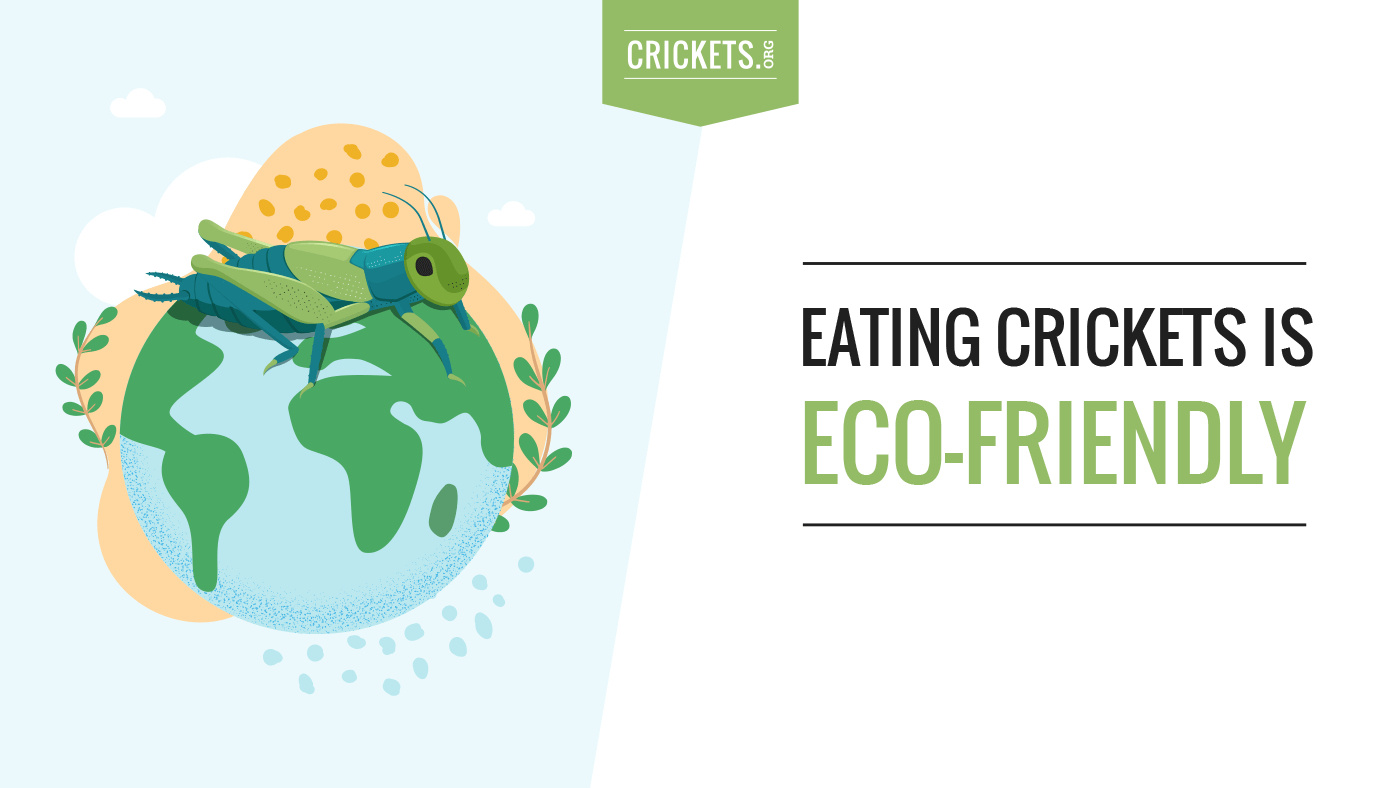
Crickets are a much more sustainable food source for the planet’s population.[2] They are abundant, don’t take up the vast amount of land that livestock farms do, and they do not pollute the air and water with greenhouse gases and waste. Compared to cows, crickets grow 13 times faster, consume 12 times less food, require 2000 times less land, and emit 100 times fewer greenhouse gases. This means that deforestation could be halted almost entirely and the world’s natural resources substantially replenished.
Crickets produce far less waste than livestock. Only 62% of a cow’s weight in meat is typically consumed [3] causing much of the product waste responsible for pollution. 80% of cricket’s weight in meat can be consumed. You use almost the entire insect for nutrition!
Cricket meat is nutritious.

Though specific amounts of nutrients provided by cricket meat vary by species, all provide the same basic vitamins, protein, and minerals you need to stay healthy.[4] Cricket meat is high in the following:
Protein
Magnesium
Zinc
Vitamin B6
Vitamin B12
Potassium
Calcium
Iron
As well as essential amino acids including:
Leucine
Cysteine
Lysine
Histidine
Threonine
These amino acids[5] build proteins, synthesize hormones, and keep skin looking healthy! They are crucial to brain health and keeps our brains performing at a rapid-fire pace.
Most of the world is already doing it.
Though the western world is largely averse to eating insects, over 80% of countries around the world have incorporated insects into their daily diet. Many countries have been doing this for hundreds of years! Mindset is the only thing that makes eating insects a big deal.
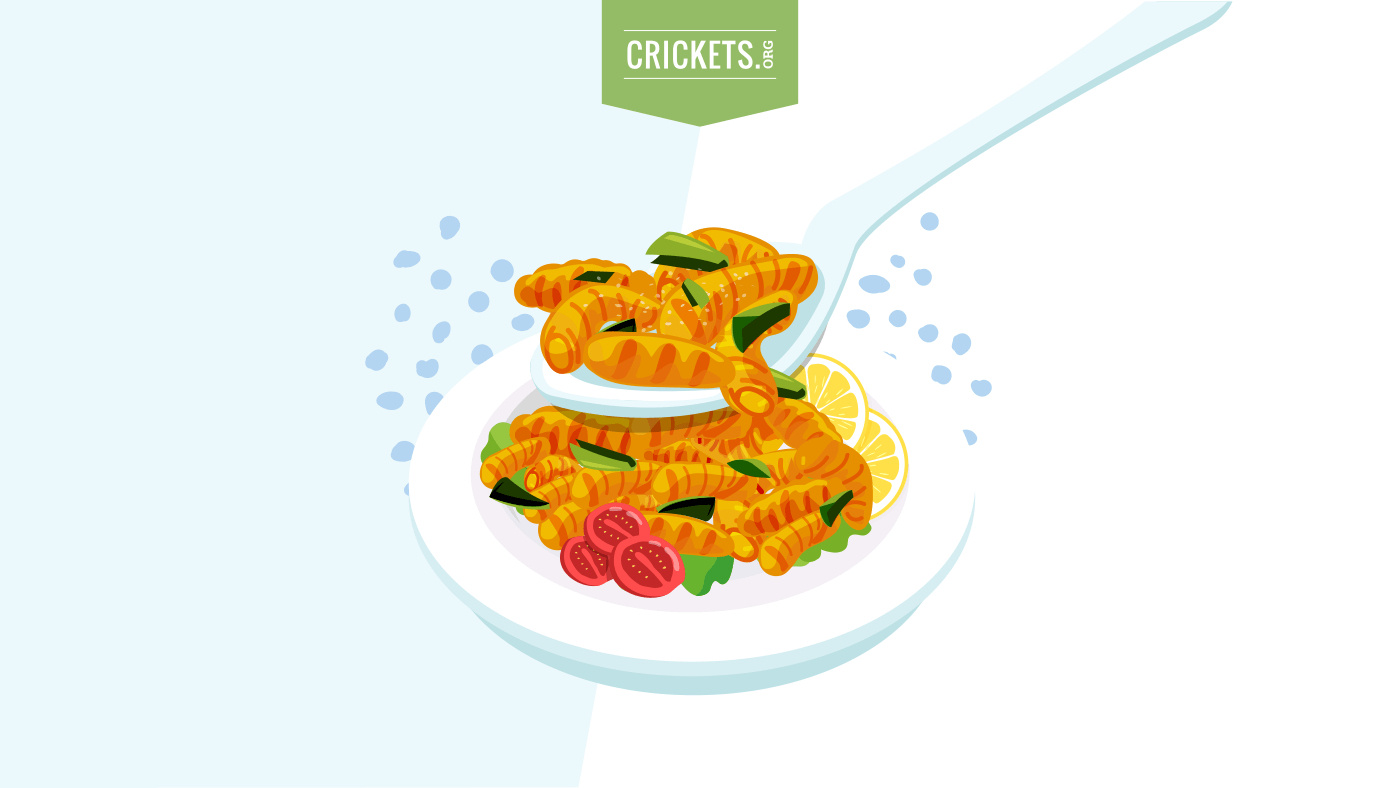
Markets in Thailand sell over 160 species of insects as food[6] and crickets are a popular choice along with beetles, ants, and locusts. There is an entire phylum of flavor and nutrients we in the west are missing out on!
Countries in Africa (Zambia, Nigeria, and Zimbabwe) commonly make insects part of their school lunch menu and sell them in their open markets. Insects makeup half of their overall dietary protein source and are valued above other meat products.
Some countries even regard insects as delicacies! Mexico, Laos, and Cambodia serve ant eggs as a gourmet dish.
Americans’ general reluctance to eat crickets and other insects stems from fear, ignorance, and social conditioning. We’ve been conditioned to feel disgusted or afraid. Media always has insects paired with dirty environments, and things that elicit a danger/disgust response from you. Besides Disney’s Lion King, nearly everything to do with insects in our media has been to show how painful or poisonous bites are, how they spread diseases, or are paired with sound effects to make them seem alien. I think it’s fair to say insects have an undeserved bad rap in our corner of the world.
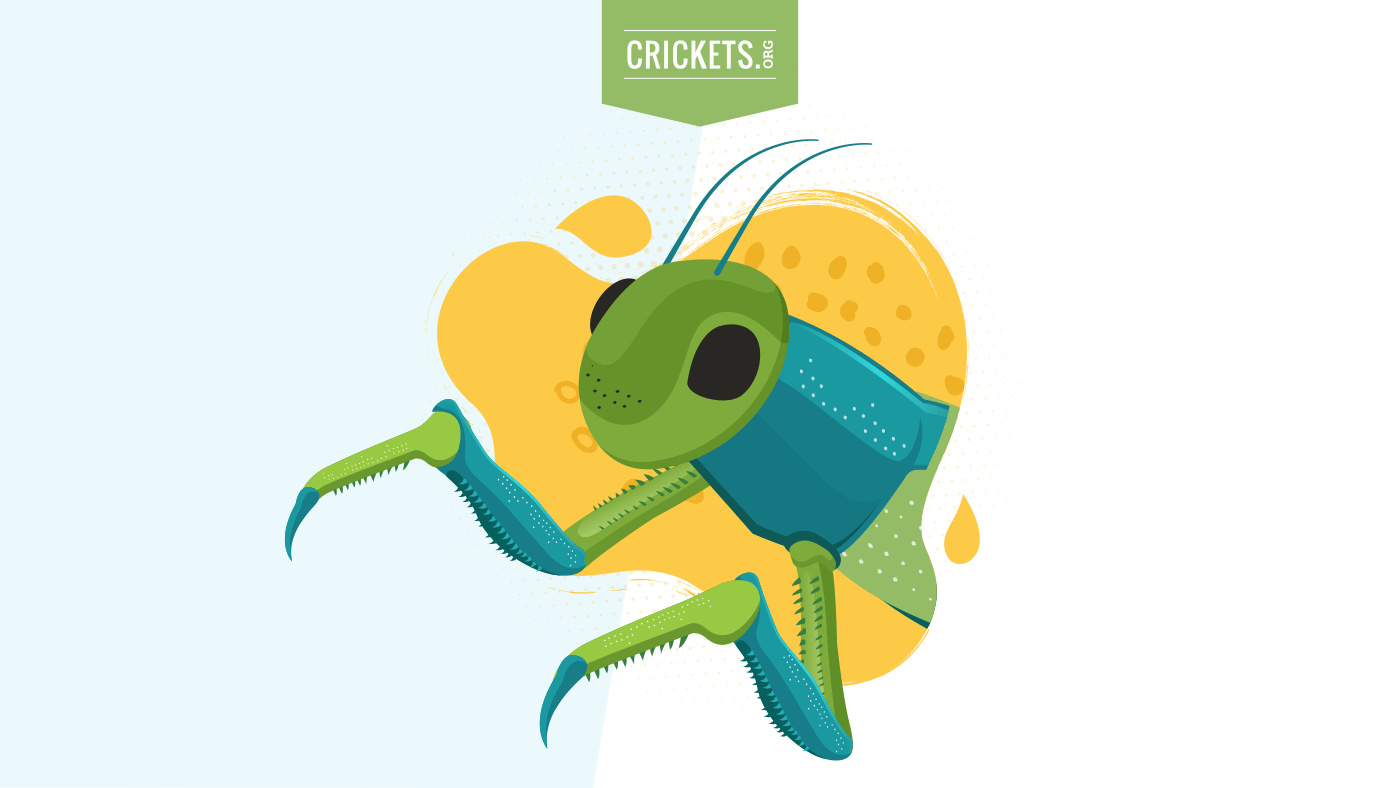
Many aversions to insects come from their strange appearance. If they have many legs, we don’t consider putting them anywhere near our mouths. It seems unnatural when most of our food walks on fours. This is an irrational fear that we as a society have given ourselves. That said, the general world population is not revolted by lobster and shrimp, which are also arthropods. It all comes down to changing our way of thinking. Unlearning what we have been taught opens up a whole new world of cuisine!
You already eat bugs.
This may come as a shock but we already eat insects regularly. The process of manufacturing most food that we eat isn’t perfect. According to the FDA[7], it is economically impractical to produce food without “defects”. This means that bugs slip through the cracks in the process and end up in several products we consume.
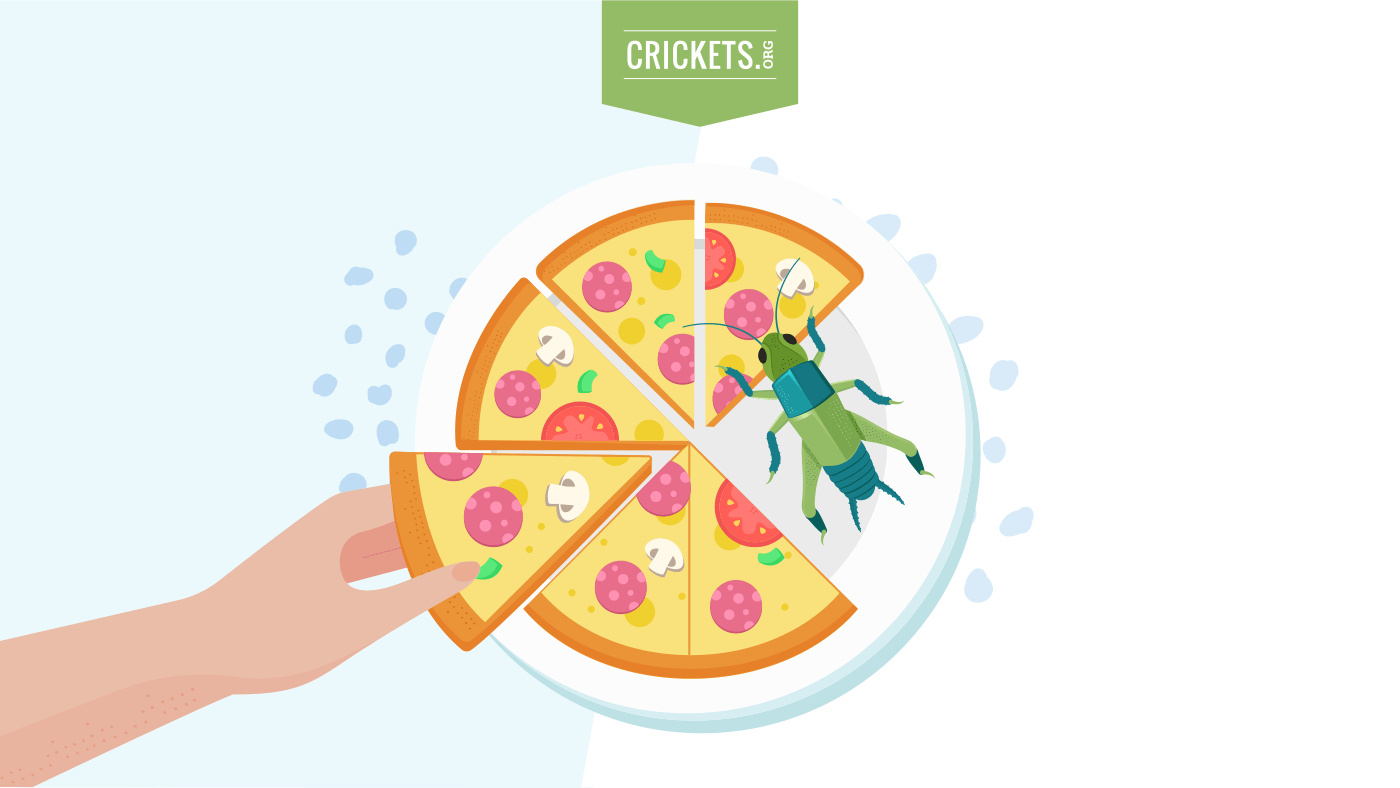
In a typical cup of rice, you could be consuming up to three insects or insect parts.
In a medium pizza, you may be eating dozens of fly eggs with the occasional maggot. This is what’s in your pizza sauce because tomatoes attract these insects.
Flour is usually loaded with ground-up insect parts as these creatures are attracted to the wheat, corn, and rice used to make it.
Other vegetables and fresh produce that we eat are littered with various insects with flies and ants being the most common.
These are just a few examples of foods that you may eat every day that contain insects or insect parts. They are often invisible because they’re ground up but just because you can’t see them doesn’t mean they aren’t there.
Aside from food, makeup products intentionally use insect parts, particularly carmine. Carmine sounds perfectly normal as far as other pigments and chemicals go but it is actually made up of the ground-up bodies of cochineal beetles.
These cochineal beetles are found in most makeup that uses red pigment. Popular brands that use carmine as an ingredient in their cosmetics include:
Burt’s Bees
MAC
NYX
Carmine is also used to make red foods visually appealing. Why? Because it isn’t harmful to you! Consuming this animal byproduct is safe unless you are allergic to specific proteins found in the dye.
One reason that we are repulsed by the thought of eating insects is that we have no idea we’re already consuming them. Pizza is a well-loved food that you eat all the time and as you now know, you are likely eating it with a side of flies.
Crickets are yummy and versatile.
You may be concerned about how cricket meat tastes and how you would serve them without enduring the ick factor of eating something that stares at you and has six legs. This is understandable if you haven’t eaten them before
Fortunately, you don’t have to eat crickets whole and you don’t have to choke them down raw or unseasoned. There are plenty of ways to prepare crickets and turn them into a delicious snack or meal!
Cricket flour
If you want the nutritional benefits that crickets provide without having to cook them whole, cricket flour is a great option for you.
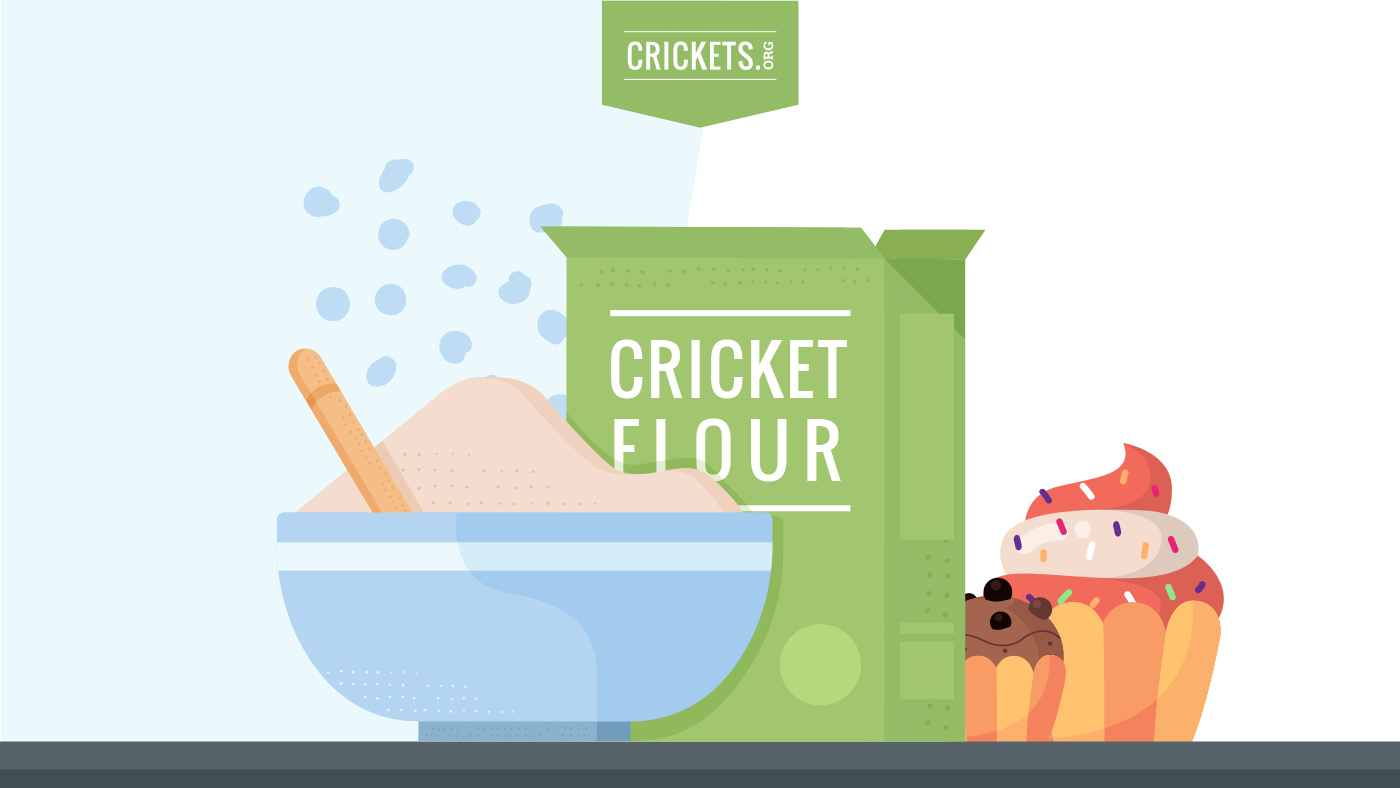
Cricket flour has a very mild flavor that many people describe as nutty. It can be incorporated into many recipes that you already make at home. Dishes that can be made with cricket flour include:
Sauteed Crickets
Sauteeing brings out the best flavor in crickets just as it does with most vegetables and meats. It’s simple and the outcome is divine! The only ingredients you need are:
crickets
olive oil
garlic
salt
The end result is golden, crispy crickets that taste nutty and according to some, similar to shrimp. You can eat them alone or add them to tacos, pasta, salsa – anything that complements the flavor. The possibilities are limitless.
Roasted Crickets
If you’re less squeamish about eating crickets whole, you can bake them for a healthy and flavorful snack. Make them sweet or savory, depending on the spices that you add. People usually opt for garlic and herbs but those with a sweet tooth might prefer tossing the crickets in cinnamon and sugar.
Fried Crickets
If there is one thing that people love above all other cooking methods, it’s frying. Frying food just seems to make everything taste better - including crickets.
Fried crickets are one of the most popular snacks in Southeast Asian countries such as Thailand. They can be flavored in several different ways. If you like spicy or salty food, fried crickets are the perfect snack option for you.[13]
These are the most popular ways to incorporate crickets into your daily meal plan but you can also eat them raw as long as they’ve been fed a clean diet. Be warned – raw crickets are not as tasty as those properly dipped in oil and coated in spices. But, honestly, what doesn’t taste better when dipped in oil and coated spices?
Solving world hunger?
Though crickets aren’t popular enough to absolutely prove this claim, crickets could be a large part of the solution to food shortages around the world.

Recent livestock diseases spreading rapidly in Asian countries has severely impacted the supply of consumable animal products while demand steadily rises. Food shortages are being felt all around the world due to the effects of natural disasters, climate change, and pollution. People need the nourishment that livestock provides and crickets can provide said nourishment.
Because crickets multiply so quickly, investing in more cricket farms could substantially cut world hunger. Food insecurity could become a non-issue in many regions because crickets provide a steady supply of nutrients that our bodies need to survive.
The criticisms of this claim are rooted in the idea that trading one food industry for another will cause the same issues that the livestock industry is facing now. That said, the solution to food insecurity and world hunger is to diversify food sources and cricket farming does that in conjunction with other sustainable food sources.
In Conclusion
So, why choose crickets as a new food source? To sum it all up:
Cricket farming will cut down on the harmful environmental impact that the livestock industry is currently causing.
Crickets are highly nutritious and provide the essential proteins, amino acids, and vitamins that you need to sustain your health.
These insects are versatile and delicious if prepared correctly. You can incorporate insects into several dishes that you already know and love.
Most countries around the world eat insects, including crickets, and have been for centuries. It’s time that we get on board.
You’re already eating them unwittingly so why not choose which insect you eat and how you prepare them?
Crickets are a sustainable food source that can help solve issues like food insecurity and world hunger if eaten in conjunction with other food sources produced by various industries.
Our planet can be saved if we get over our illogical notions about eating insects and start serving them up. Most of the world’s population consumes mammals every single day and it’s causing a whole host of problems. If we diversify and branch out, a whole new delicious world of cuisine opens up and we make the planet livable for everyone for centuries to come.Give crickets a chance, for your health and the Earth’s. 🦗